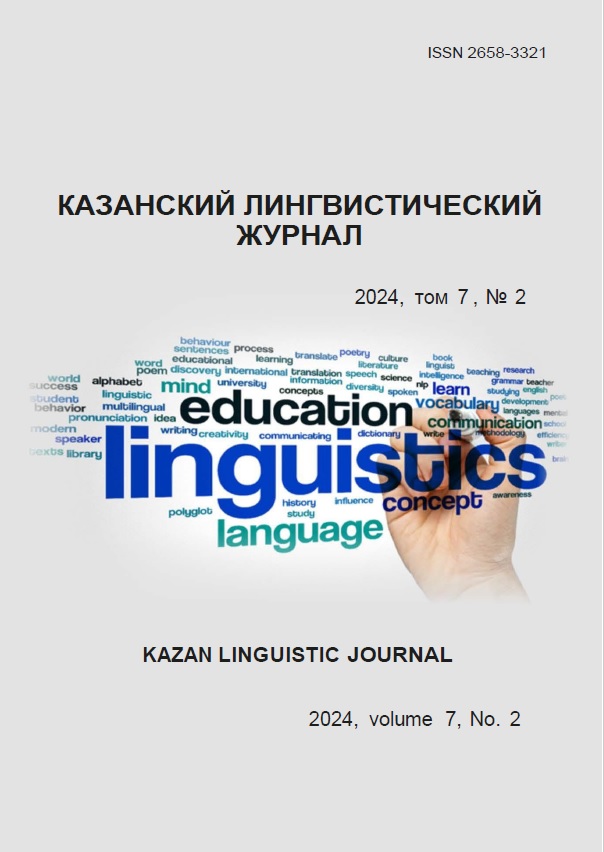The Derogative Sphere of Conceptualization as a Dominant of Thematic Film Discourse (Based on a Karachay-Balkarian Documentary Film about Deportation)
https://doi.org/10.26907/2658-3321.2024.7.2.180-190
Keywords:
linguocultural analysis, linguoaxiological analysis, film discourse, film text, conceptual analysis, derogativityAbstract
This article is devoted to the linguoculturological and linguoaxiological analysis of the Karachay-Balkarian documentary film discourse on the topic of deportation. The purpose of the analysis is to determine the tools for representing the category of derogativeness in the lexical units of an authentic film text. The material of the study was the film text of the documentary film "Khorlatmaz adam esi". The relevance of the work is justified by the growth in the volume of film production both in Russia and around the world, and, consequently, the growing interest of linguists in the corresponding type of discourse. The study is based on the understanding that, regardless of the language being studied, film discourse is a valuable resource of knowledge that has a high linguocultural significance. The theoretical part of the article discusses the concepts of the category of derogativity, the most common means of representing the category of derogativity, lists the main types and genres of film discourse, and provides a historical background of the events that formed the basis of the plot of the analyzed film text. The practical part describes the linguo-axiological and linguo-culturological analysis of lexical units identified by the continuous sampling method. The study also involved morphological, semantic, conceptual types of analysis. As a result of the analysis, emotionally colored lexical units were identified, the derogativeness of which is realized in various ways. The selected units attract attention not only for their derogativeness, but also for their important role in the implementation of basic concepts as part of the precedent world of DEPORTATION.
References
References
Akchurina N.I. Nomination of art films in the aspect of linguoculturology. Kazan Linguis-tic Journal. 2018;1(4):52–60. (In Russ.)
Sakaeva L.R. To the question of national and cultural values’ expression of American cinematography through cinema titles. Kazan Linguistic Journal. 2022;5(2):200–209. (In Russ.)
Olyanich A.V. Film discourse. Discourse-Pi. 2015; 2. Available from: https://cyberleninka.ru/article/n/kinodiskurs [accessed: 07/15/2023]. (In Russ.)
Karasik V.I. Language circle: person, concepts, discourse. M.: Gnosis; 2004. (In Russ.)
Kurbanov I.A. The ways of expressing the category of derogativeness in different lan-guages (based on the Russian, English and Tatar languages). Humanitarian sciences. 2020; 6. Available from: http://www.nauteh-journal.ru/files/f95287fb-d8c2-4b16-aba6-6c80f07bebbb [ac-cessed 07.15.2023]. (In Russ.)
Bredikhin S.N. Textological functions of allegorical rethought constructions in the sense-forming aspect. Fundamental research. 2015; 2: 639–643. (In Russ.)
Bredikhin S.N. Constants of intentionality, subjectivity and modality in the hermeneutic understanding of meaning. Issues of cognitive linguistics. 2015;3(44): 54–58. (In Russ.)
Ramazanova A.Kh. Lexico-semantic means of expressing the meaning of contempt in languages of different systems. Proceedings of VSU. 2011;(2):151–153. (In Russ.)
Bredikhin S.N. Scheme Derivation within Metaunits of Hermeneutic Processes of Under-standing and Interpretation. Modern problems of science and education. 2014; 4. Available from: https://science-education.ru/ru/article/view?id=13920 [accessed: 01.08.2023].






